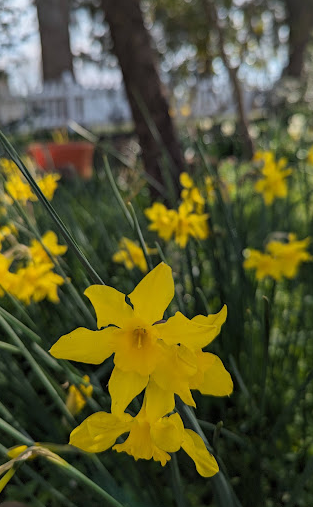The Future of Ornamental Plants
- Clifford Brock
- Mar 18, 2022
- 3 min read
The act of gardening helps connect us with nature. It is one of the last vestiges of a way of life that completely dominated our existence for millennia. Evidence points to the first domestication events occurring around 12,000 years ago with grains like rye and gourds used for containers. Our species is unique in the animal kingdom, except for maybe ants, because we have learned how to manipulate or domesticate other species for our own use.
Humans have molded life, particularly plants, to fit our own needs and desires. As just one of the countless examples, consider the modern sunflower. Nothing represents American wholesomeness and rural nostalgia quite like the sunflower. Yet the sunflowers we see today scarcely resemble their ancient forebearers. Modern sunflowers typically have one single study stem graced by one humongous flower while their ancestors had many heads on a highly branching plant. Both are beautiful in their own way.

Pictured below, is a modern giant

Our obsession with manipulating "nature" and genetics goes well beyond our food crops. Our horticultural or ornamental plants have also been molded by man. Picture our modern roses, hydrangeas, annuals, delphiniums, tulips, etc... They all look noticeably different from their wild ancestors. Hybridizers have largely created plants with bigger, more colorful flowers, and shorter sturdier stems. The emphasis has been mostly on aesthetics, or what we find attractive. And little attention has been paid to how these new cultivars interact with other species or function within the larger ecosystem. Double flowers, or flowers with many petals, are often selected by breeders. People, especially the frenzied, inexperienced, fair-weather gardeners of sping, love large gaudy flowers. Indeed, most consumers, first and foremost, are interested in something beautiful. As long as it looks good in its container, that's all that matters.
Of course, there is a place for such "superficial" plants, as I like to call them, and I personally grow many "double-flowers" simply because I too find them beautiful. However, given my limited gardening space, I prefer to focus more on plants that offer benefits to other species. I also select plants that engage my other senses. I increasingly find the subtle beauty of "wilder" plants more aesthetically pleasing and easier to integrate into the landscape. Though this a generalization, be they also tend to a bit hardier and more resilient in the landscape. But just to reiterate, I am not against creating a plant simply because it is beautiful. My wish is that simply that more people appreciate a wider range of plants, not just the big and the bold, but also the meek and "wild". When we open ourselves up to a more expansive definition of beauty, we begin to uncover all hidden gems around us.


I'm proposing an alternative way to think about the future of plant breeding. Specifically, thinking about breeding and selecting our horticultural crops to better serve the larger ecosystem. I envision a world where nurseries are stocked with plants that are specifically "designed" to function within the local ecoregion. Techniques like genetic engineering and directed evolution can be implemented to enhance a plant's benefit to other species.
For example, consider the spicebush swallowtail butterfly. Its primary host plants are Lindera (spicebush) and Sassafras, and both species are currently threatened by an introduced pathogen. If other, less vulnerable, plants could be given genes from Lindera that attract swallowtails, one could conceivably enhance the survival of this species going forward. Theoretically, one could also accelerate the evolution of the butterfly so that it can utilize other species as a larval food source. Of course, actions such as this will be met with resistance from the conservation community. Genetic engineering remains a highly contentious issue, but I do think it will play an increasingly important role in the future of biological conservation.

We must keep in mind that the natural environment is mind-bogglingly complex. And I don't want to imply that we should just willy-nilly tinker with life in a carefree way. Obviously, we should carefully consider all the possible interactions and ecological "disruptions" that could occur with our increasing powers. We should always remember that, despite all of our technological advances, our understanding of the natural world is still in its infancy. But I believe we have a moral obligation to do all that we can, using all of our tools, including GE, to preserve and even "enhance" the diversity of Earth. Saving species in this age of climate change and human development and destruction will require us to take considerable risks. But doing nothing is, in my opinion, not an option.




Comments